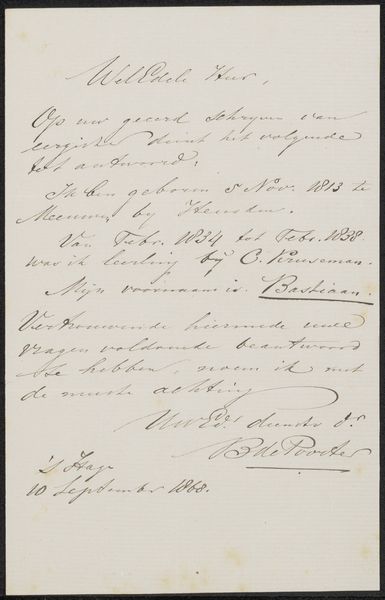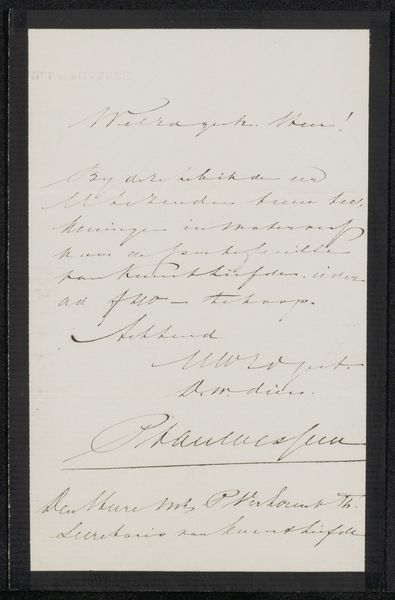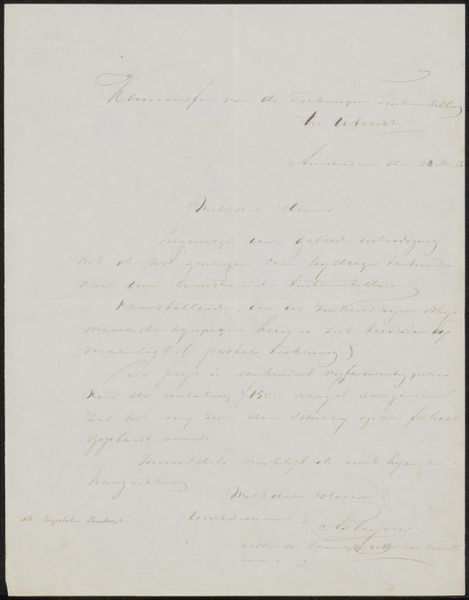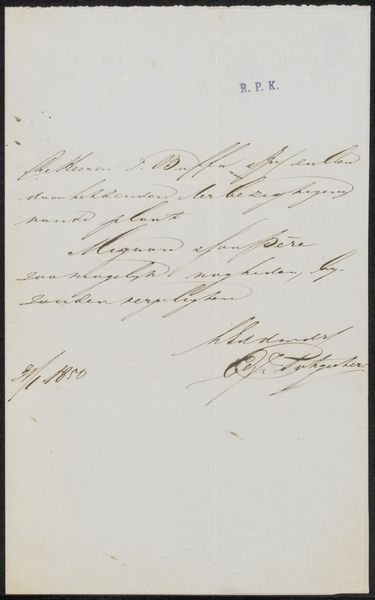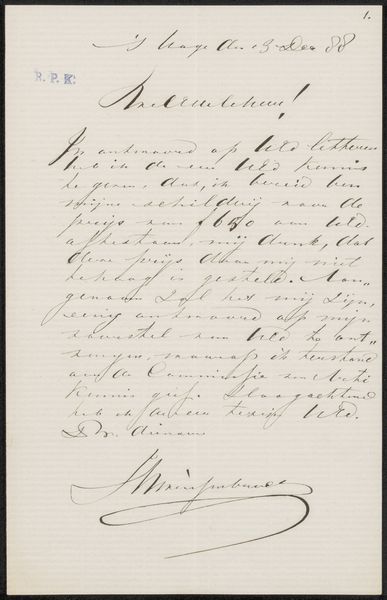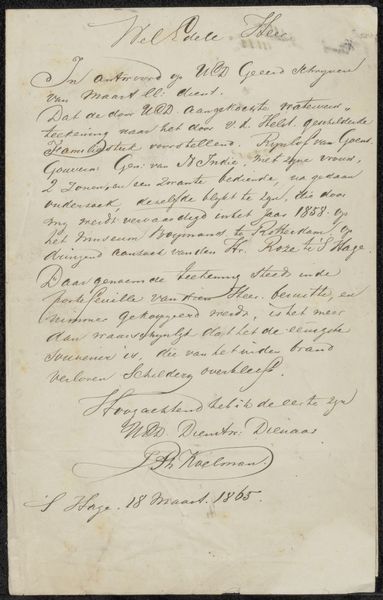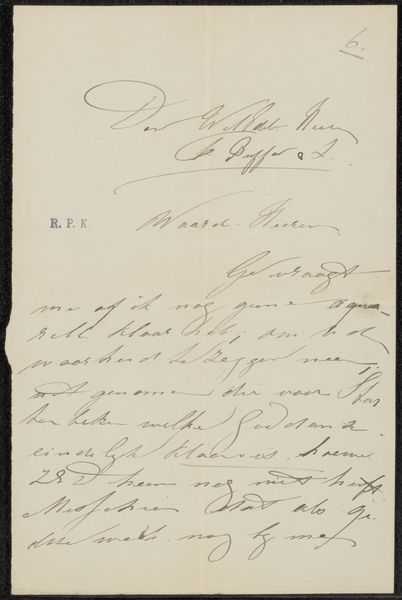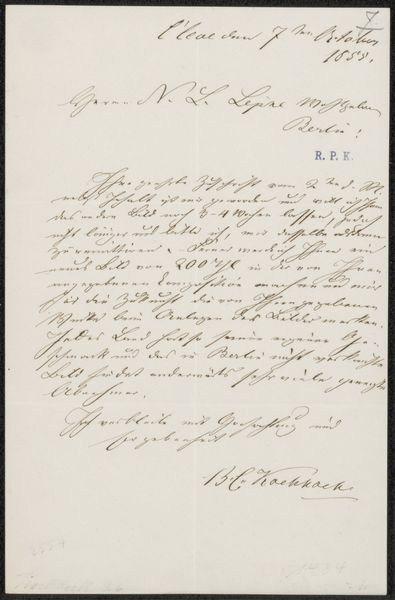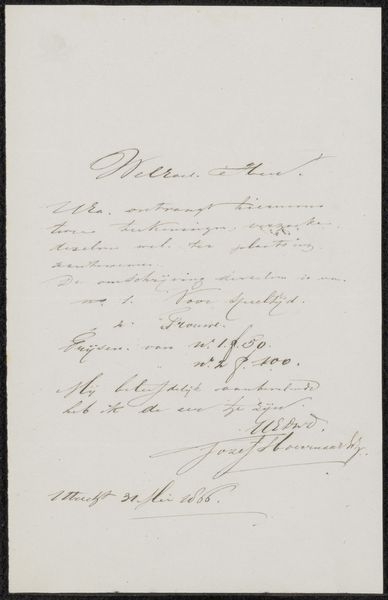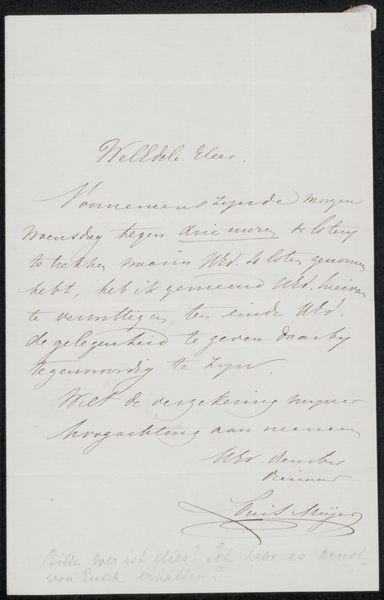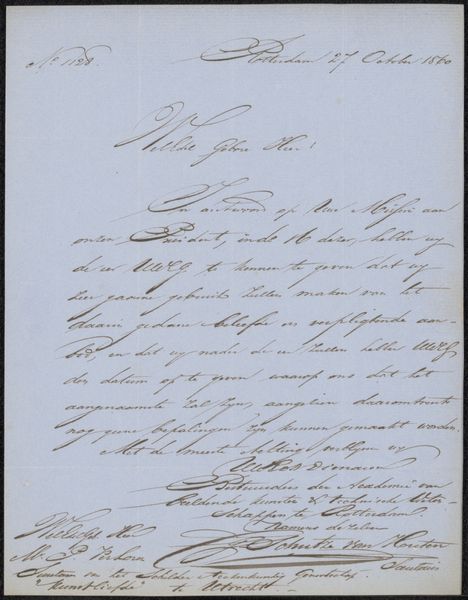
drawing, paper, ink, pen
#
drawing
#
paper
#
ink
#
pen
#
calligraphy
Copyright: Rijks Museum: Open Domain
Editor: We're looking at "Brief aan anoniem," or "Letter to Anonymous," by Louis Charles Hora Siccama, created sometime between 1817 and 1880. It’s ink and pen on paper, showcasing beautiful calligraphy. There's a somber feel to this solitary script on the page. What strikes you about this piece? Curator: This letter transcends its immediate function, doesn’t it? Consider the societal role of correspondence during this period – the limited literacy rates and how letter writing served as a crucial tool, often for the elite. The act of writing, of crafting a narrative for an unseen audience, was inherently performative. I am also interested in how “anonymity” frames the letter’s meaning. Do you think it speaks to issues of class, gender, perhaps even resistance during the 19th century? Who might have been excluded from such exchanges? Editor: I never considered the inequalities in something as simple as letter writing. Could it be interpreted as a conscious act, preserving the author's anonymity within a social structure where their voice might have been marginalized? Curator: Precisely! Think about how the power dynamics inherent in 19th-century society influenced not just who could write, but also who could be *heard.* This letter, by being addressed to an anonymous receiver, opens a space to subvert conventional communicative norms. It begs the question: is it secrecy, defiance, or something else entirely? This "something else" could stem from social pressures of that time. Editor: It's amazing to think that such a simple piece of correspondence can unpack layers of social dynamics. Curator: Art becomes particularly interesting when it mirrors both resistance and existing structures of power. Considering anonymity challenges us to reflect on both visibility and erasure within dominant cultural narratives. What do you make of that now? Editor: Now I appreciate how the letter gives tangible form to both the written and unwritten conventions of its time. Thanks for making that visible for me.
Comments
No comments
Be the first to comment and join the conversation on the ultimate creative platform.
